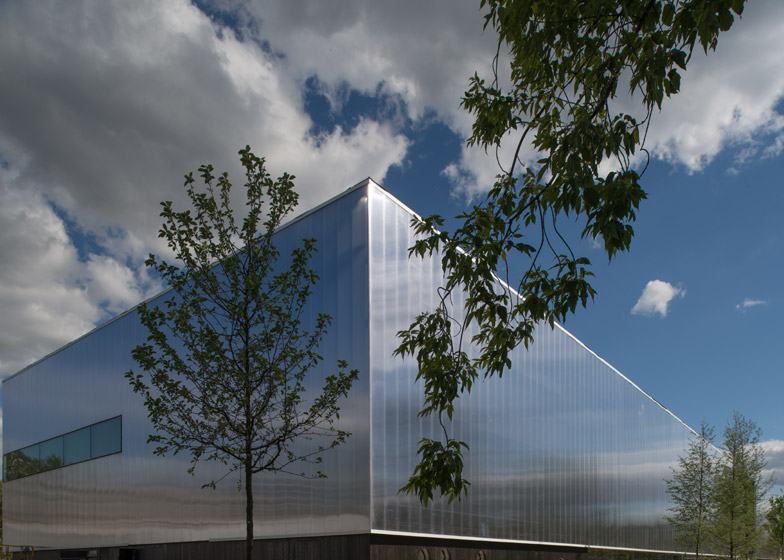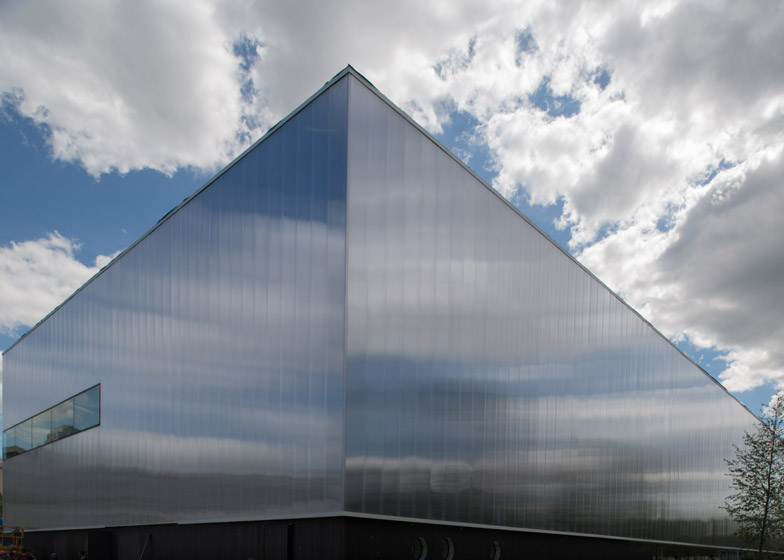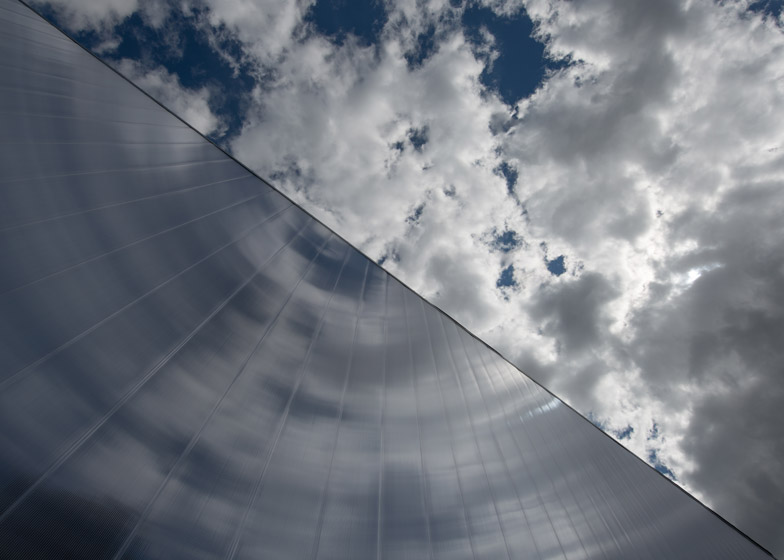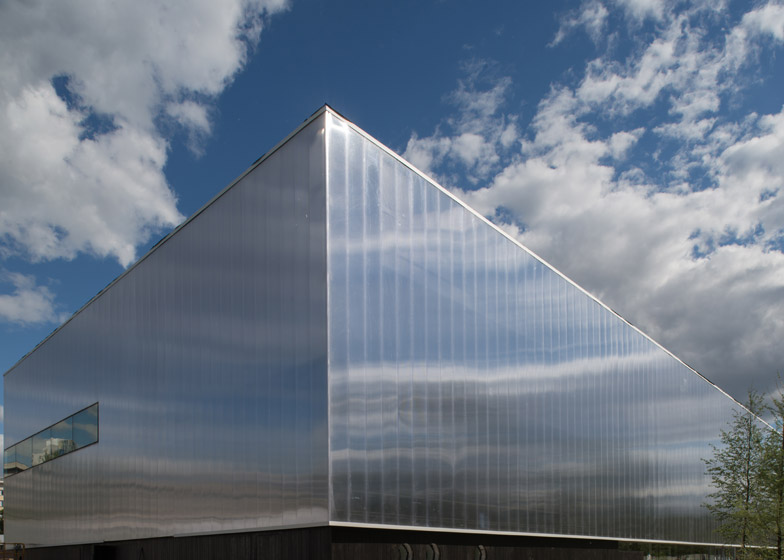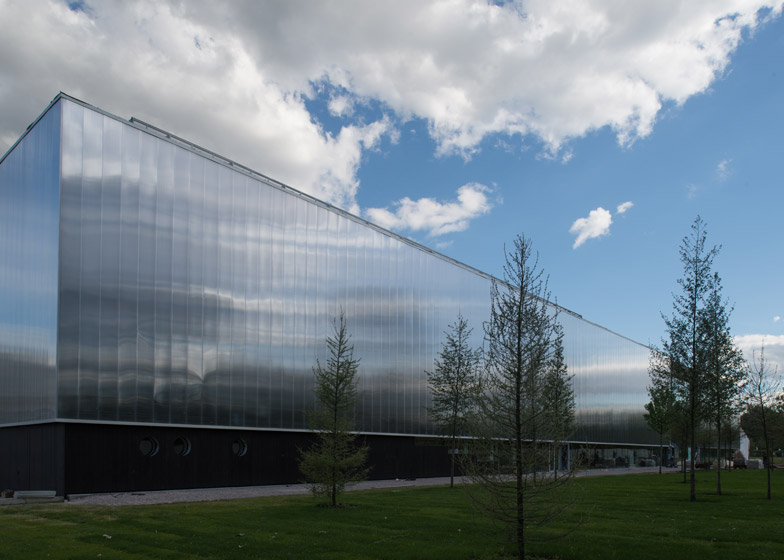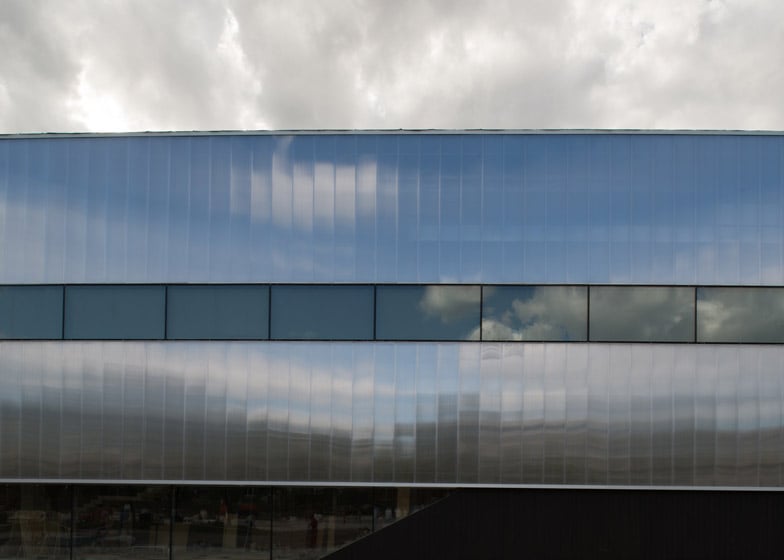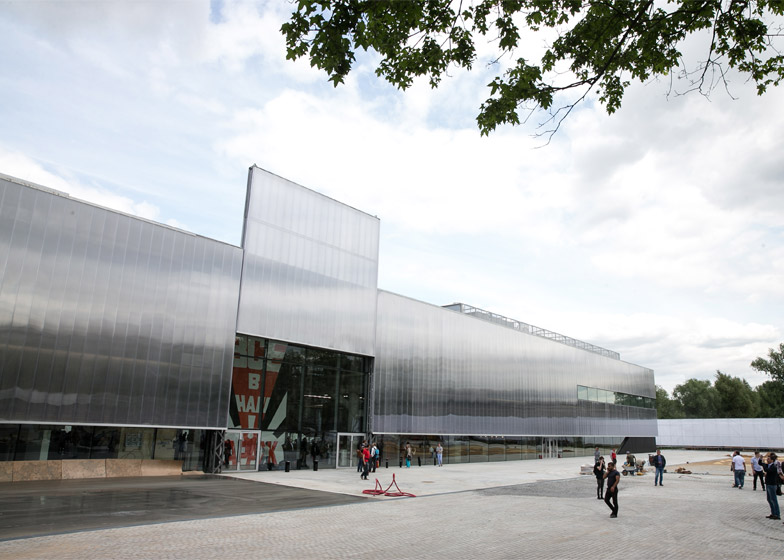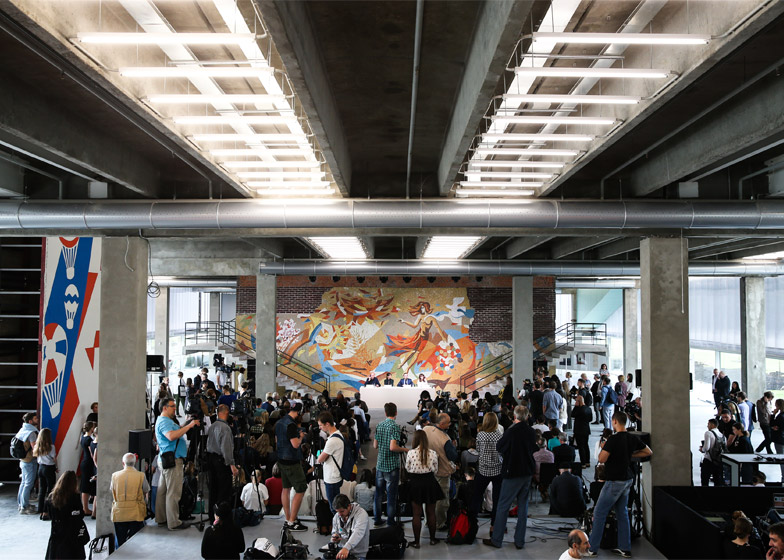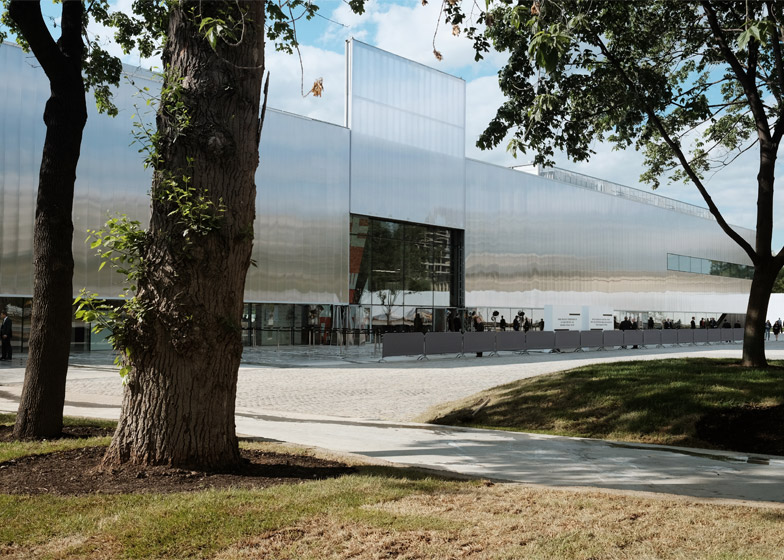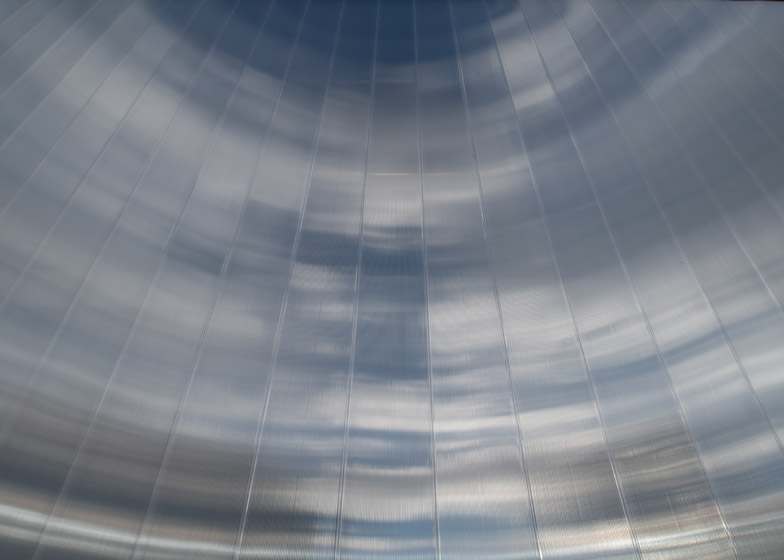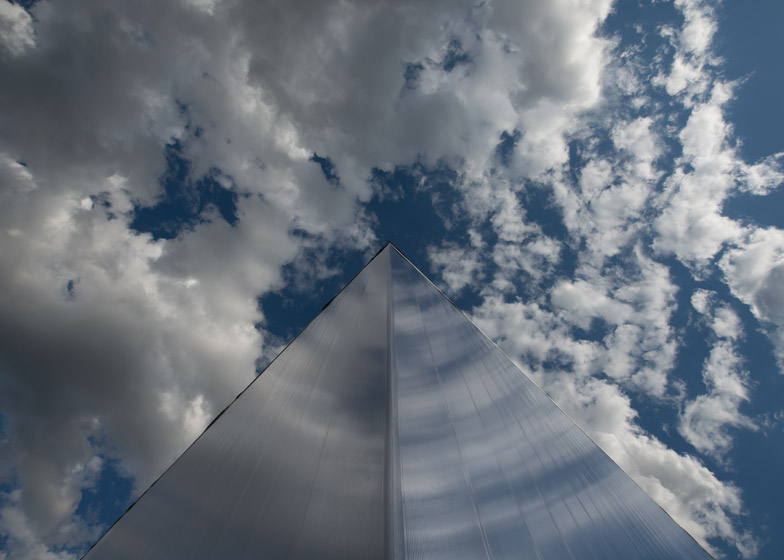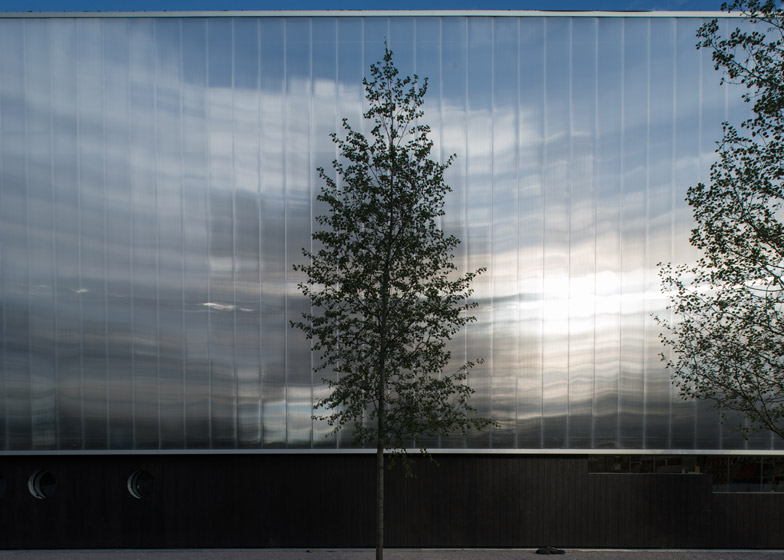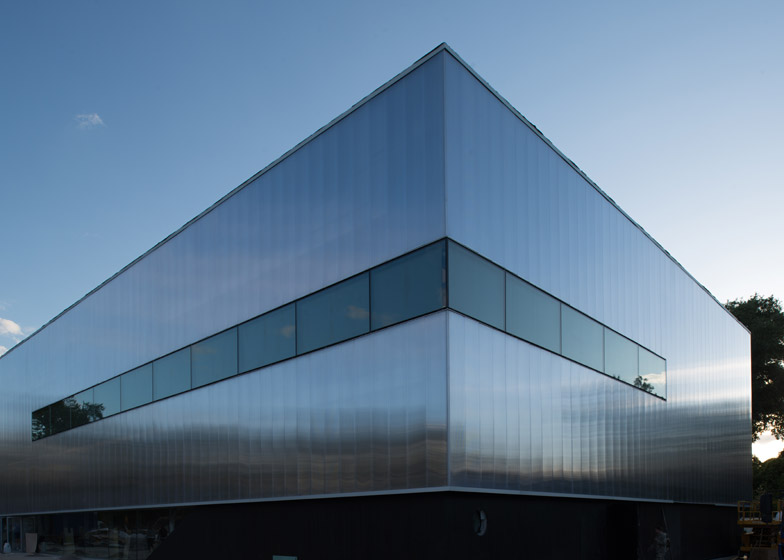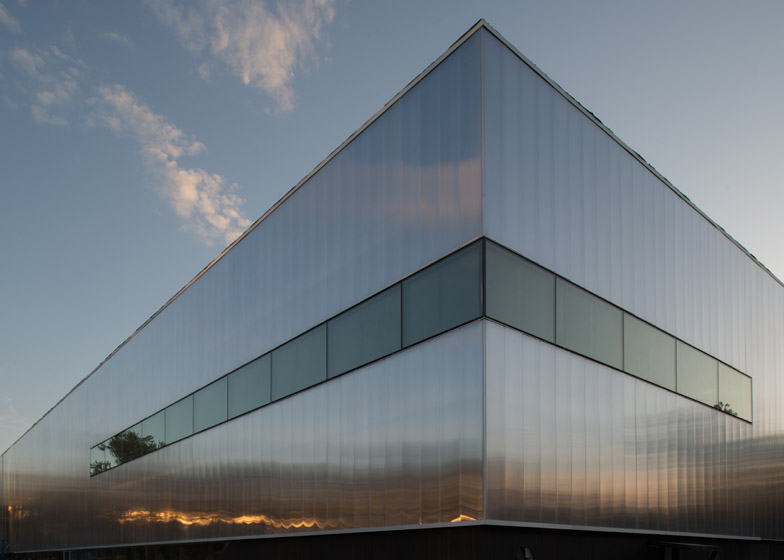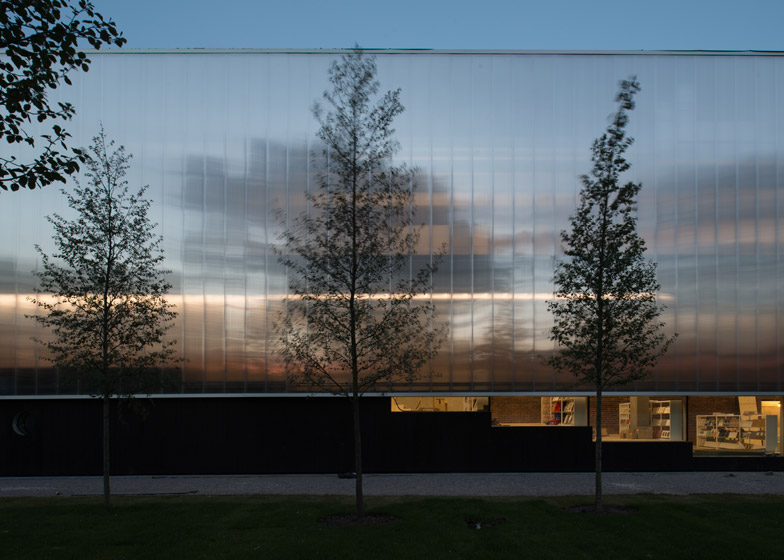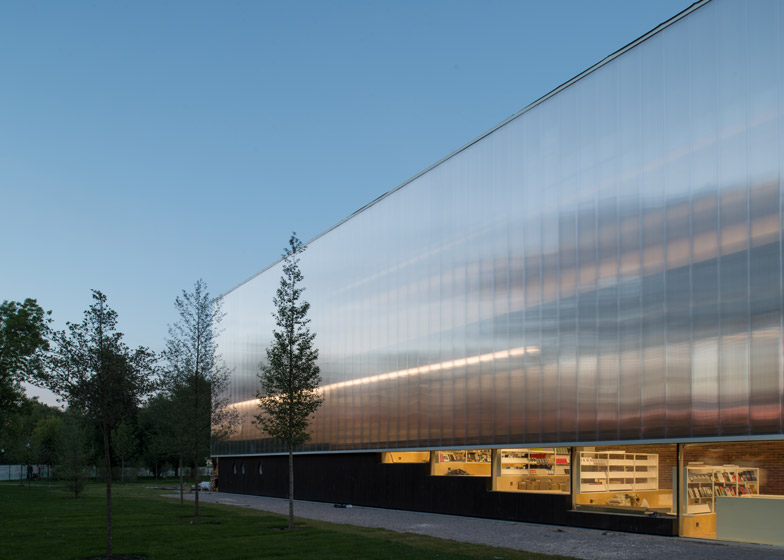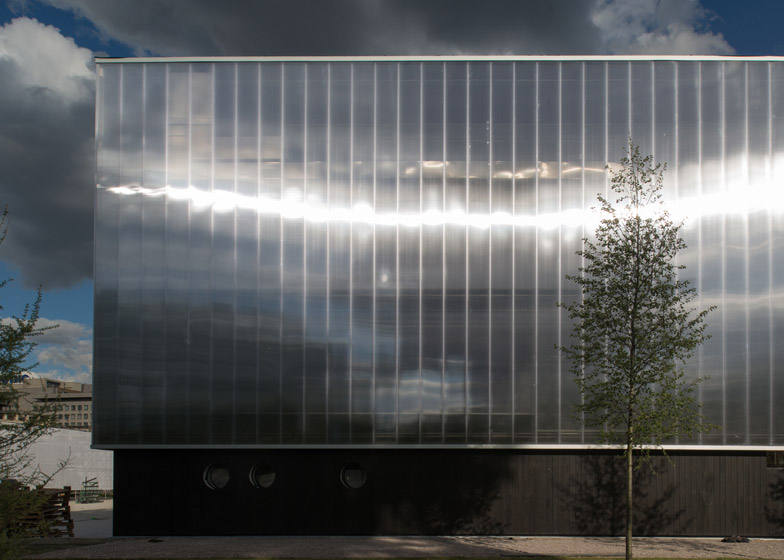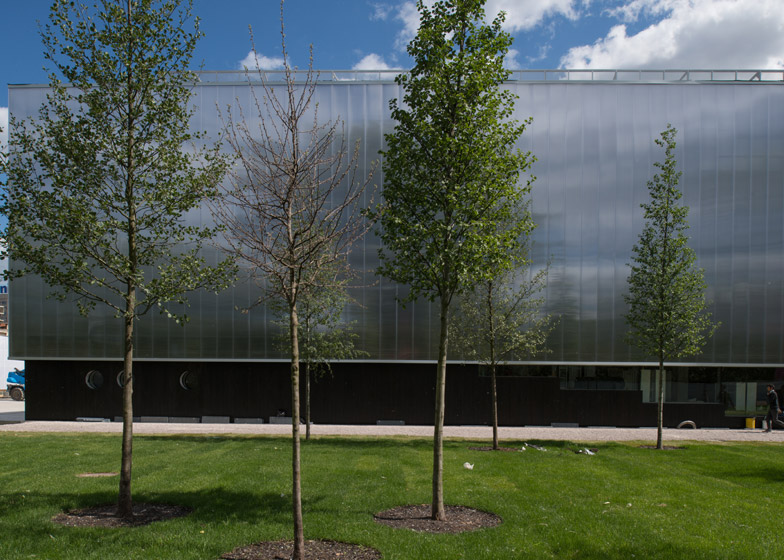The polycarbonate-clad Garage Museum of Contemporary Art, designed by Rem Koolhaas' firm OMA, has opened in a refurbished Soviet-era restaurant in Moscow's Gorky Park (+ slideshow).
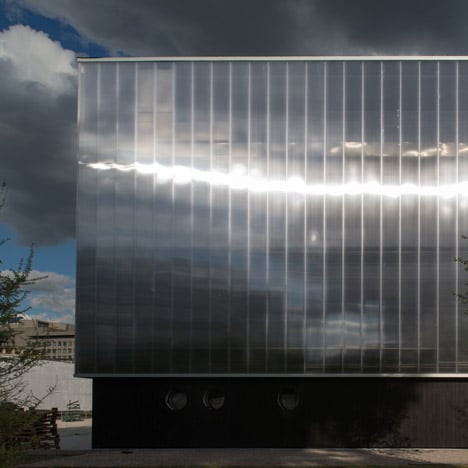
The museum, which opened yesterday, is the new home for the gallery owned by Russian businesswoman and gallerist Dasha Zhukova.
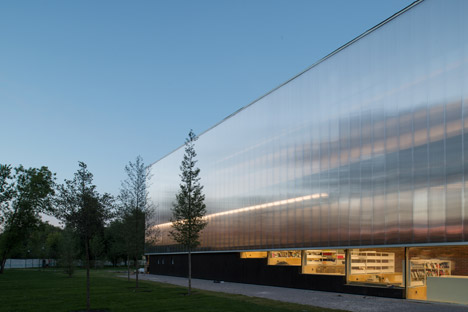
The two-storey building was derelict for 20 years before being bought by Zhukova. Inside, some of the original Soviet mosaics have been preserved, and decorative tiles and brickwork elements were also kept intact.
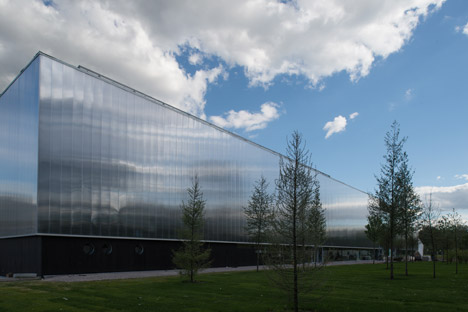
"Typically art is now shown in white cubes, but we think this will create a more interesting interaction between the past and the present," Koolhaas told Dezeen in a movie filmed at the launch of the project in London in 2012.
Koolhaas was lead architect on the refurbishment of the 54,000-square-metre building, which now features a double-layered polycarbonate facade that wraps around the retained concrete structure of the former Vremena Goda restaurant.
"We found an abandoned, almost ruined restaurant from the 1960s in Gorky Park and decided to turn that into the new Garage," Koolhaas explained to Dezeen.
"It was a very public building, the Soviets were straightforward, but had generous spaces," he added. "We decided to accept almost everything of that building, even though it was very ruined. So all we do is actually clad what we found with a skin of polycarbonate."
The translucent plastic skin is raised two metres off the ground to allow the ground-floor spaces to open out to the surrounding park. Dark panelling clads the lower portion of the building.
The Garage gallery was founded in 2008 by Zhukova and takes its name from its former home – a 1920s industrial garage designed by Russian architect Konstantin Melnikov.
The gallery's new home features two 11-metre-wide vertical sliding doors that rise seven metres above roof level when fully opened.
Five exhibition galleries are spread out through the building. Other spaces include an auditorium, educational areas, a bookshop and a cafe.
The centre won't be fully complete until September, when a red-metal staircase will provide access to a roof terrace.
The design for the new gallery was unveiled in 2012 and was originally due to complete in 2014, but the state of the building meant that it required more work than originally expected.
The nearby Hexagon, a 1920s exhibition centre that once housed one of Europe's biggest cinemas, has also been purchased by Zhukova's partner and Chelsea Football Club owner Roman Abramovich.
The Hexagon's ring of six pavilions, connected on their inner sides to form a geometric courtyard, will also be redeveloped with a design by OMA.
OMA is currently working on a string of renovations, including turning a 19th century building in Paris into a gallery and artists studios, and the conversion of a historic Venetian palazzo into a department store.
The firm has just completed work on the Fondazione Prada arts centre in Milan, a converted distillery that features a "haunted house" clad in 24-carat gold leaf and a cinema camouflaged by mirrors.
Other conversions of Soviet-era buildings in Moscow include Archiproba's transformation of a telecommunications building into offices and MVRDV's project to turn the Hammer and Sickle steel factory into a new urban quarter.

